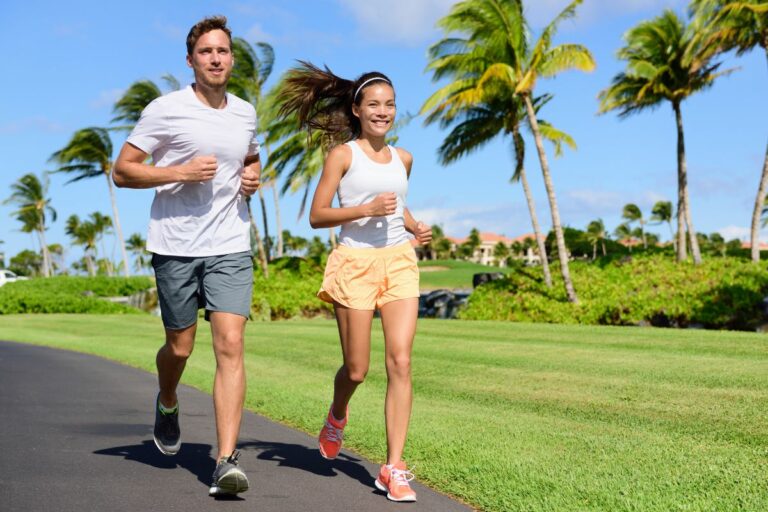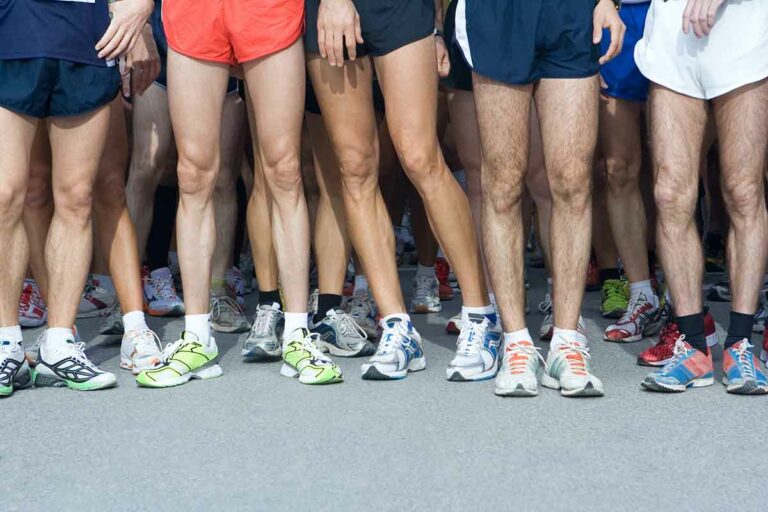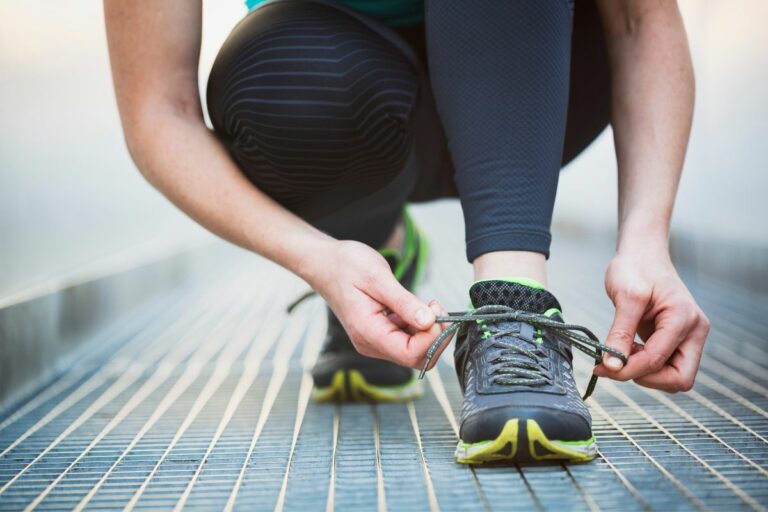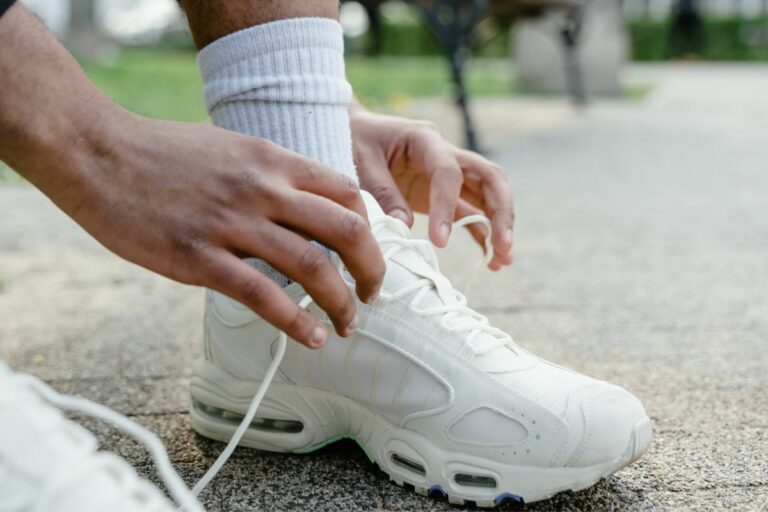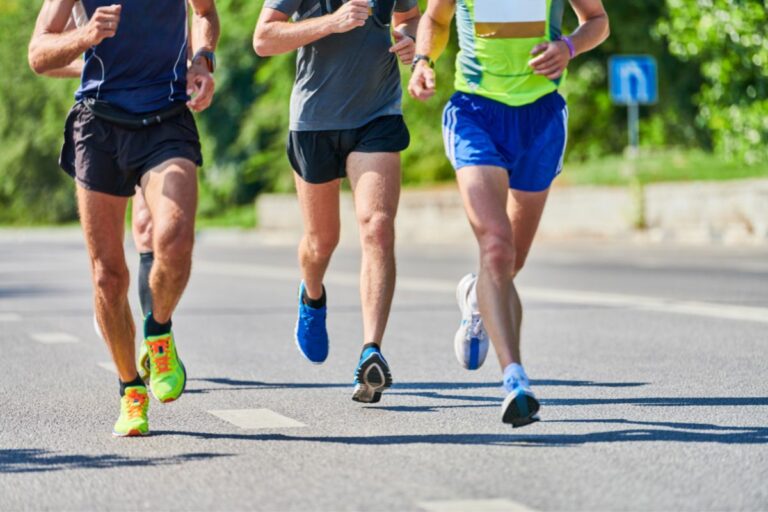How to Lace Running Shoes (to Make Your Running Shoes More Comfortable)

Understanding how to lace running shoes correctly can make a huge difference in how your running shoes fit.
A lot of runners have valid concerns about their running shoes. The way your shoes fit, feel, support, and cushion your feet can affect your comfort level and your injury risk during your run.
- You can adjust the fit of your running shoe by altering the way you lace them.
- You can adjust the lacing to provide a snugger fit if your running shoes feel loose.
- New lacing can also give more breathing room when your running shoes feel too tight.
The fit and support of your running shoes mainly depend on choosing the correct size for your feet.
However, the way you lace your shoes can also have a great effect on the way your shoes fit.
- If your shoes fit too tightly, you won’t be comfortable while you run, but the pressure can also lead to some conditions, like bunions, Morton’s neuroma, and metatarsalgia.
- If your running shoes fit loosely, you’re more likely to trip during your run. The additional movement may lead to blisters from the material sliding across your skin (in our other article, we have tips on how to prevent running blisters).
We’ll cover several ways of lacing your running shoes in this article, as well as why shoe lacing techniques are so important.
Why Are Shoe Lacing Techniques So Important?
Running shoe lacing techniques are different ways of weaving the laces through the loops of your shoes.
A lot of running shoes have a basic lacing pattern. This involves the left and right laces crossing each other, then zig-zagging up the loop line, starting from your toe and finishing at the ankle.
This crisscross pattern may be suitable for some runners, but if you find that you’re experiencing sores or blisters when your shoes fit well, you may need to try a different shoe lacing technique.
Switching up your shoe lacing pattern can change the fit and tension across the upper section of your shoes. This can make them fit more snugly if your shoes are too loose, or give them some more space if the shoes are too restrictive.
Here are some running shoe problems that you may be able to fix by changing your shoelace pattern.
- Blisters on your heels, toes, tops, soles, or sides of the foot.
- Bunions
- Pain in the balls of the feet
- Tingling or loss of sensation in the feet
- Heels slipping up and down of your shoes during a run
- Feet slipping forward while you run, particularly during downhill runs
Please note that changing your running shoe lacing pattern may be able to fix some shoe problems, but the size and shape of your shoes are also important factors.
If your running shoes are too big or small or are shaped in a way that doesn’t support your feet, switching to a different shoelace technique won’t be enough to make the shoes fit properly.
Shoe sizes vary by brand; for example, Nike has a reputation for producing tighter shoes, so Nike shoes run small.
Different Shoelace Techniques
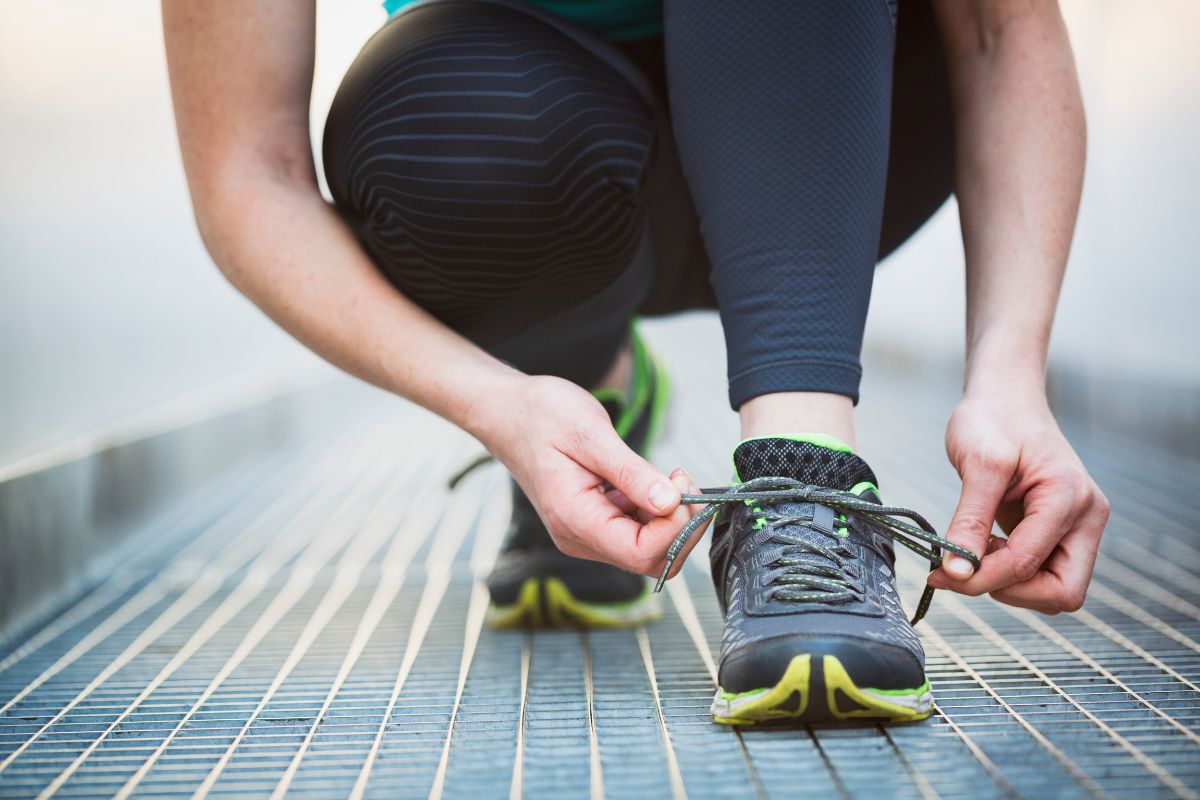
Here are some different running shoelace patterns and the issues they may help to solve.
1. Runner’s Loop – Locking Heels In Position
If your heels aren’t fixed in place while you run, your feet may slip and rub the toes against your shoes. Try the runner’s loop to solve this issue:
- Lace the pair of shoes as you usually would, crossing them over each other until you get to the second loophole underneath the top of the shoe.
- Don’t cross the laces over again, but draw each shoelace end up, then thread it through the top loophole on the same side to create a loop. Do this on both sides of the shoe.
- Take each shoelace end over and through the loop on the other side of the running shoe.
- Raise and pull the shoelace ends to make the loops smaller, as this will ensure they fix the shoelace firmly in position on both sides.
- Tie your shoelaces as you usually would to finish.
2. Reef Knot – Tighter Than A Granny Knot
In most cases, the shoelace knot you were taught as a child will either be the ‘reef’ knot or the ‘granny knot’.
Both of these are simple, quick, and look just like each other. However, the granny knot isn’t that secure compared to the reef one.
Your shoelaces will pull a reef knot tighter while your feet move, but pull a granny knot looser so they aren’t as constricting.
You can check which knot you know how to do with the following test.
- Take your shoe and tie your shoelace knot normally, with your feet out of the shoes.
- Take the tied one from its top loopholes and draw sideways. If the loop ends slant, leaving one of the loops facing downwards instead of sideways, you have tied the less secure granny knot.
- If the pull check shows the bows facing at right angles to either side of your shoe, you will have tied the more secure reef knot.
You can turn your granny knot into a reef one with some simple steps.
- Follow all of the tying steps in the normal way. Cross the laces and create your first loop as usual.
- Next, reverse the route of the shoelace while you create your second loop. So, if you usually take your shoelace on top of your first loop, take it beneath the next loop instead – or vice versa.
- Finish the shoelace knot and carry out the pull test above to check.
- If your knot still seems like a granny knot, finish off your knot by drawing your last loop towards the other side of the shoe. If you normally pull it to the right, take it to the left, and vice versa.
3. Window Lacing – Easing Pressure At The Top Of The Feet
The window lacing technique, also known as the box lacing technique, can help ease any discomfort around the tops of the feet.
- Unlace your shoelaces until you get to the loopholes just beneath the uncomfortable pressure point.
- Re-lace the shoes by traveling up to the following eyelet, then crisscross the shoelaces over each other.
- Lace the shoes in your normal way to finish.
The Bottom Line
Now you know some different ways to lace your running shoes! Many running shoes have longer shoelaces that let you use the runner’s loop technique, so you’ll be able to try the other two patterns out with your usual shoelaces.
Remember that while shoelace patterns can fix some shoe problems, the size and shape of your shoes will determine how comfortable your shoes are.
You can read more about how should running shoes fit in this article.

